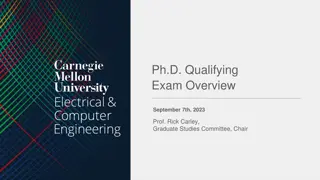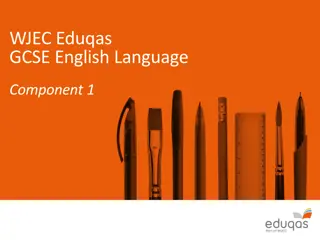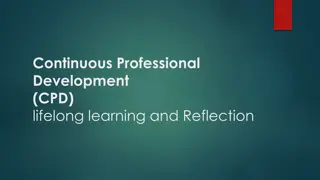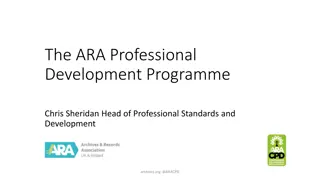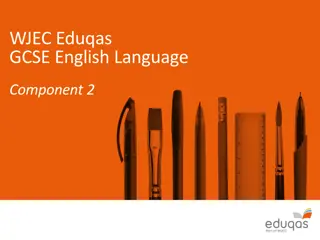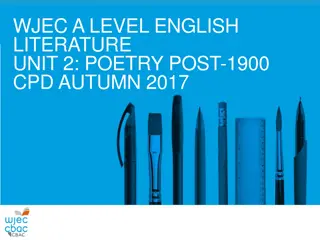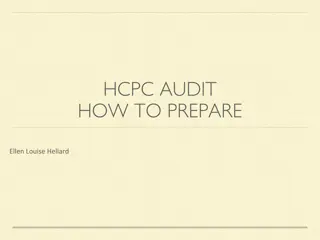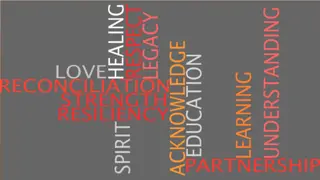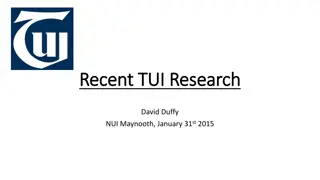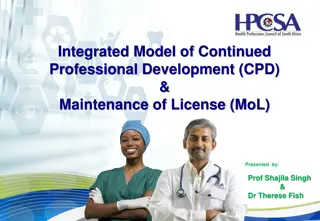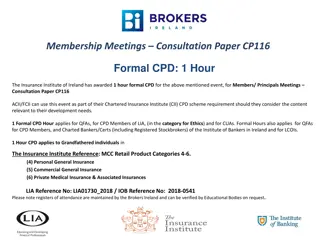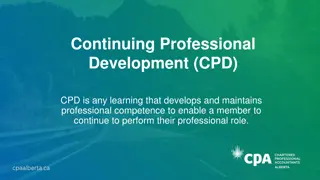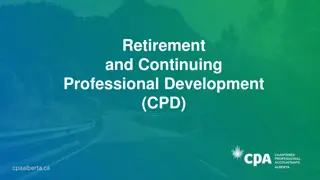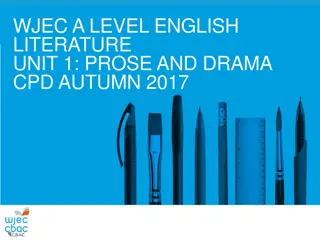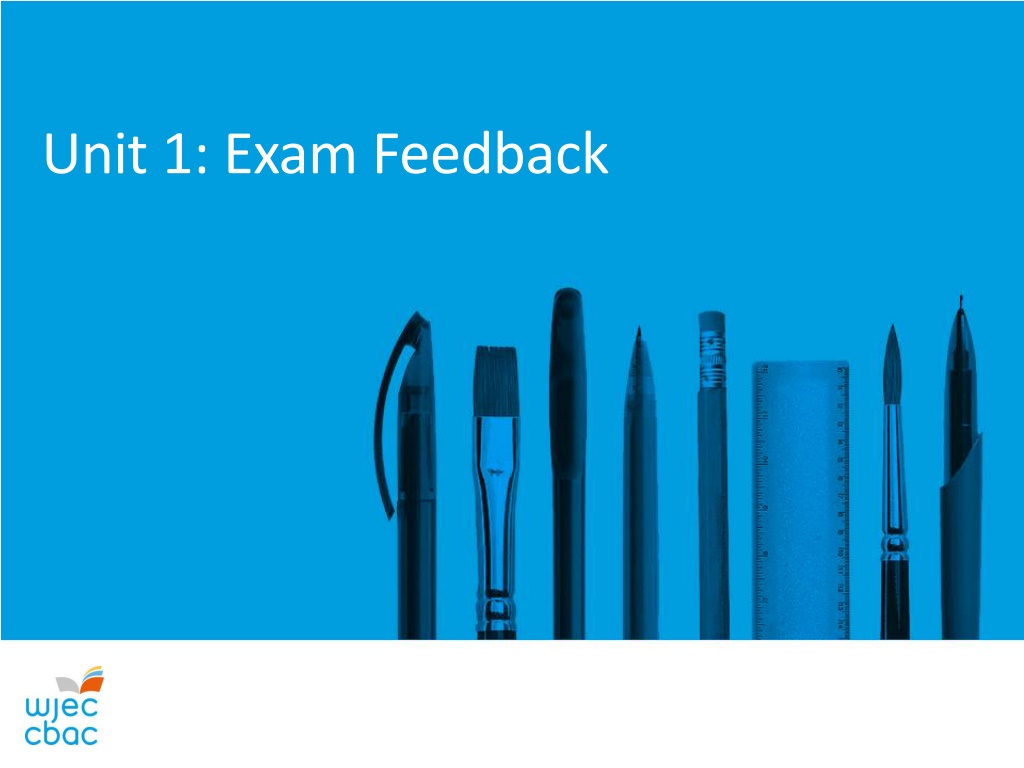
Exam Feedback for Psychology Students
Get valuable feedback on recent psychology exam questions, including explanations, applications, and evaluations related to cognitive, behaviourist, positive, and biological approaches in therapy. Improve your understanding of key concepts and enhance your performance in future assessments.
Download Presentation

Please find below an Image/Link to download the presentation.
The content on the website is provided AS IS for your information and personal use only. It may not be sold, licensed, or shared on other websites without obtaining consent from the author. If you encounter any issues during the download, it is possible that the publisher has removed the file from their server.
You are allowed to download the files provided on this website for personal or commercial use, subject to the condition that they are used lawfully. All files are the property of their respective owners.
The content on the website is provided AS IS for your information and personal use only. It may not be sold, licensed, or shared on other websites without obtaining consent from the author.
E N D
Presentation Transcript
ASSUMPTIONS 1. Using examples from psychology explain two assumptions of the cognitive approach. [4+4] Repetition was an issue with students Students missed out on full marks due to failure to use appropriate examples from psychology. They also need to explain how the example links to the assumption.
APPLICATION TO A RELATIONSHIP 2. (a) Describe how one assumption from the behaviourist approach can be applied to the formation of relationships. [4] (b) Describe how one assumption from the positive approach can be applied to the formation of relationships. [4] Some students spent too long describing conditioning without clearly linking to relationships. Students would benefit from using appropriate terminology for the approach.
HOW THE APPROACH CAN BE USED IN THERAPY 4. Explain why a psychologist following the biological approach would consider drug therapy OR psychosurgery as a suitable therapy. [5] (Eduqas AS paper) Too many students described the therapy with little link to why a biological psychologist would use it linked to the assumptions Some students listed weaknesses of a therapy, and these would not explain why a therapy was chosen unless these weaknesses were less of a problem than other therapies. Assessment Objectives resource
COMPONENTS OF THERAPY 5. Describe the main components of psychosurgery OR drug therapy. [12] Links between the therapy and the approach were not necessary but could be useful. Some students muddled up terms like dopamine and serotonin or were unable to fully explain how a drug worked. In psychosurgery answers, candidates gave some graphic descriptions of the different types but in some cases lacked detail by not referring to specific parts of the brain or disorders that they were being used for. Some students wasted some time by writing a conclusion or evaluating the therapy.
EVALUATION OF THERAPY 3. Evaluate cognitive behavioural therapy (CBT) OR rational emotive behaviour therapy (REBT).[10] The best answers used relevant research to support arguments. They dealt well with conflicting findings from research evidence, going beyond simply reporting the findings of the studies and explaining what this meant in terms of the overall effectiveness of CBT/REBT. Weaker answers lacked elaboration and/or conclusions. Some answers muddled CBT with mindfulness. Although some of the comments might be relevant, their generic nature meant it was unlikely to access the highest bands.
EVALUATION OF APPROACH 6. Identify and explain two weaknesses of the behaviourist approach. [4+4] The majority of students identified two relevant weaknesses but there was variation in the quality of the explanation. Examples were often superficial with no specific reference made to studies or concepts from the approach Explanation of why something was a weakness was often missing. Many candidates evaluated either the classic evidence or the therapy from the approach - the focus should have been on the approach as a whole. There was also a lot of confusion between key terms such as determinism and reductionism.
EVALUATION OF APPROACH - COMPARE AND CONTRAST 8. The biological approach may be more scientific than the psychodynamic approach. However, the psychodynamic approach still has some advantages over the biological approach. With reference to the above statement, compare and contrast the biological and psychodynamic approaches in terms of their similarities and differences. [10] This question required three aspects: applying knowledge of the approaches to the quotation; writing a detailed, logical comparison and coming to a relevant conclusion. Many candidates made no reference to the quote, which is the main assessment objective that is being examined (AO2). Formulaic compare and contrast answers using acronyms gained some credit but students answering on auto-pilot failed to access the highest marks. Comparing approaches on points such as having different assumptions and theories of relationships attracts minimal credit and better answers looked at wider issues such as nature/nurture
CLASSIC PIECE OF RESEARCH - FINDINGS 4. (a) Describe the findings of Myers and Diener s (1995) research Who is happy? . [8] Many students used sub headings to categorise the results, which helped to add structure and clarity to the responses. Students demonstrated detailed knowledge of a range of findings and were able to add in details such as names of researchers or specific figures quoted as part of the original article. Some answers muddled percentages or failed to add specific details, which restricted their answer to the middle mark bands.
CLASSIC PIECE OF RESEARCH -CONCLUSIONS 4. (b) Briefly describe the conclusions of Myers and Diener s(1995) research Who is happy? .[4] Generallythis question was poorly answered. Many students wrote vague answers or simply restated the findings from the first part of the question. It is vital that candidates are prepared to answer questions on all elements of classic evidence as named on the specification and the original journal article should be used as the key source of information when determining what could be credited in a question such as this.
CLASSIC PIECE OF RESEARCH - EVALUATION OF CLASSIC EVIDENCE 7. Critically evaluate Bowlby s (1944) research Forty-four juvenile thieves: Their characters and home-life . [12] Students must be careful when applying research methods evaluation points as some used common concepts that were inappropriate for the study or not fully explained. It would be useful for students to look at both sides of an argument. Some students wasted time describing the study, which was not necessary. Some students did not elaborate their points or draw conclusions which meant their answers appeared more like a shopping list of criticisms Some students focused too much on ethics and were repeating similar points about consent and the use of children.

